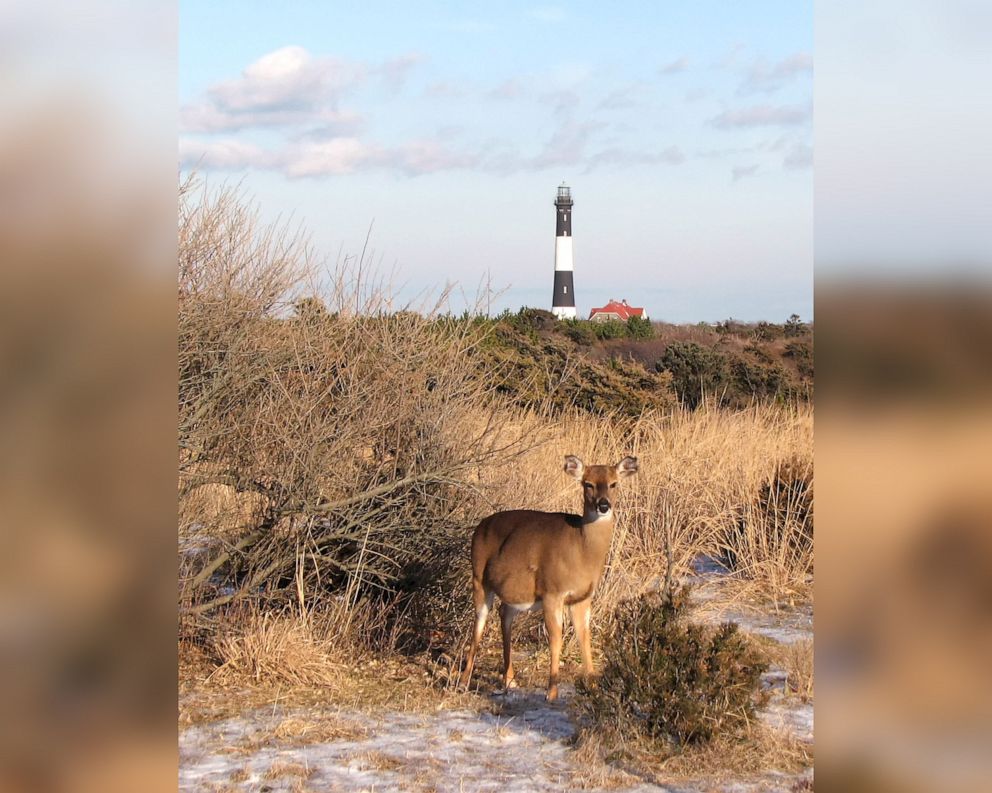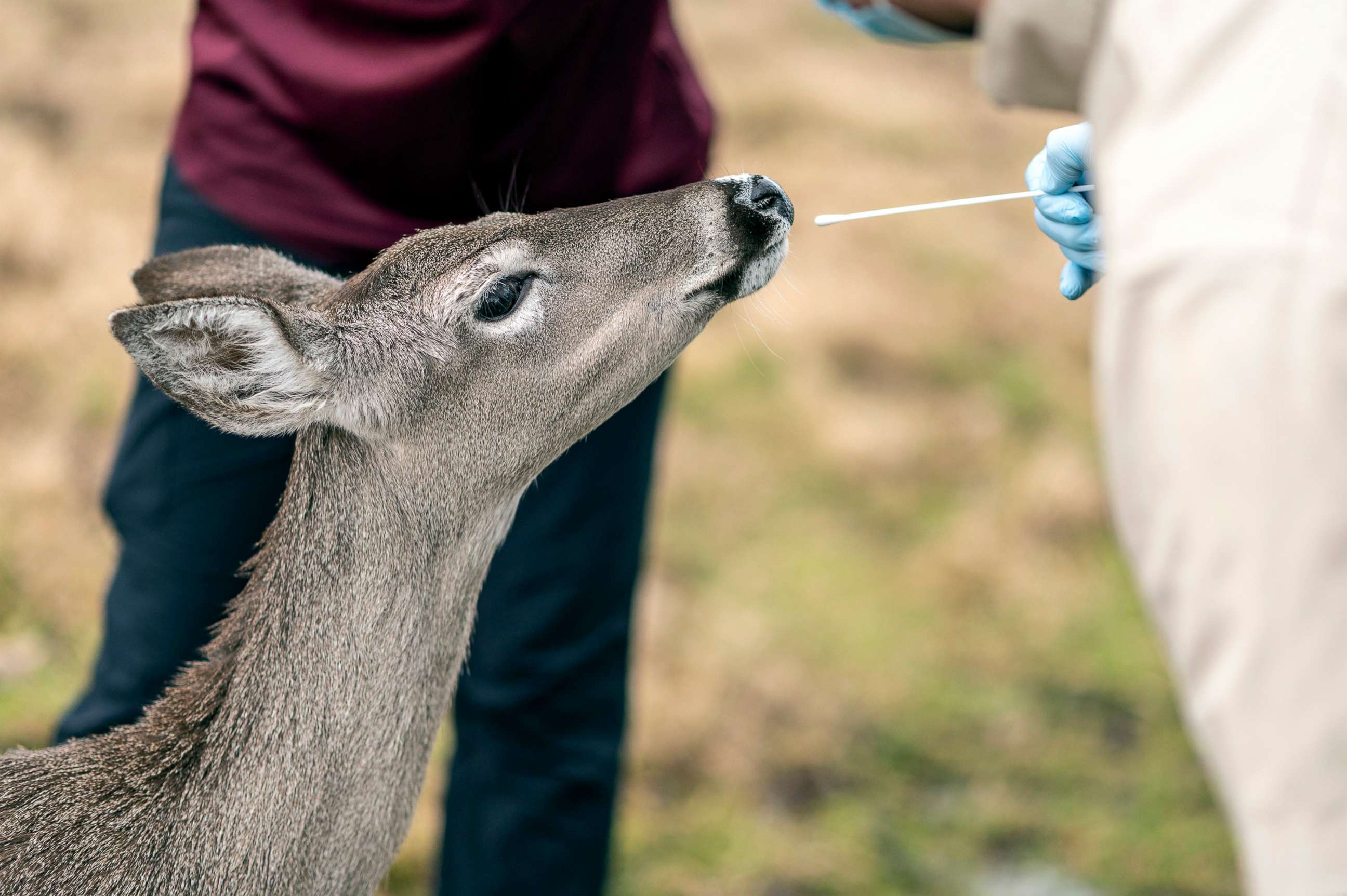Omicron found in NYC deer raises questions about COVID transmission from animals to humans
About 15% of the 131 deer sampled in NYC positive for antibodies.
The discovery of deer in New York City infected with the omicron variant is raising questions about whether or not animals could potentially transmit COVID-19 to humans.
A new study, which has not yet been peer-reviewed, found that 15% of 131 white-tailed deer sampled in the borough of Staten Island tested positive for antibodies.
Although there has not yet been any evidence that the virus can spread from animals to humans, the findings -- from Pennsylvania State University, the New York City Department of Parks & Recreation and conservation group White Buffalo -- raise concerns that deer could become a reservoir of the virus or lead to new mutations.
'We demonstrated for the first time that the omicron variant has also spilled into the wild animal species," Dr. Suresh Kuchipudi, a professor of virology at Penn State and lead author of the study, told ABC News. "The fact that the spillover continues to happen is quite concerning."

This is not the first time deer have been found to be infected with COVID-19. Researchers have found samples positive for the virus in deer dating as far back as September 2020 in Iowa.
According to the U.S. Department of Agriculture's Animal and Plant Health Inspection Service, COVID-infected deer have since been discovered in several states including Illinois, Michigan, New York, Pennsylvania and Ohio. Experts say the new results were not surprising.
"We've seen from various studies … that deer are sometimes naturally infected from exposure to people," Dr. J. Scott Weese, a professor at Ontario Veterinary College at the University of Guelph in Canada, who was not involved in the study, told ABC News. "We've seen different strains and the strains that are found in deer reflect what is going on in people at the time."
There are a few theories for how deer became infected with omicron, and all involve humans as the starting point.
One theory is that deer came into direct contact with humans -- who likely got close to them and fed them -- and caught the virus. Another is that deer interacted with other animals such as cats that were infected with COVID from humans.
Dr. Samantha Wisley, a professor of wildlife ecology at the University of Florida Institute of Food and Agricultural Services, who was also not involved in the study, said wastewater is another potential path of transmission.
"The theory that I find most plausible is that we know that at least elements of the virus are shed in wastewater," she told ABC News. "So, people are either urinating or defecating out the virus. What we haven't seen is if that virus is still alive or able to infect other things; I don't believe that's been proven."
She continued, "But, at the same time, that would make a lot of sense that wastewater might be the way that it's getting from humans to wildfire, particularly deer."
Currently, data suggests deer can spread the virus to other deer but not that it spills over back to humans.

"Right now, your biggest chance of exposure [to COVID], even if you encounter deer, is still going to be from a person," Weese said. "But as we get less person-to-person transmission over time, if it's still in animals, then animals become more of a relative risk."
The experts said they are concerned if the virus keeps circulating around deer and remains present, rather than burning out. Deer-specific COVID variants could emerge as a result, they say.
"Right now, we're just seeing human strains that are going to deer and they're spreading around for a little bit," Weese said. "Now the question is will those stay in the deer? If they do, will they mutate and could that cause a problem?"
He continued, "So they could be a reservoir, they could be a source of mutants, or they could be what we call a dead-end, that the variants just go into deer and don't go any further."
Researchers are also concerned about finding older strains of the virus, such as the alpha or delta variants, in deer.
"Are they maintaining older lineage viruses or just becoming infected with the 'flavor of the month' of what variants are current in humans," Dr. Andrew Bowman, an associate professor in the department of veterinary preventive medicine at The Ohio State University, told ABC News.
"If deer can serve as a wildlife reservoir ... it's not a question of do we have enough hospital beds today. It's what strains are circulating and what's the risk of them entering back into humans whether that's in five, 10, 20 years," said Bowman, who was also not involved with the study.
Kuchipudi said he encourages everyone to get vaccinated against COVID to prevent more animals from becoming infected.
"I think those who are infected or tested positive should continue to follow the same mitigation measures as taking care of pets," he said. "The biggest source of the virus to animals is humans, and anyone who hadn’t done so should consider vaccination."




